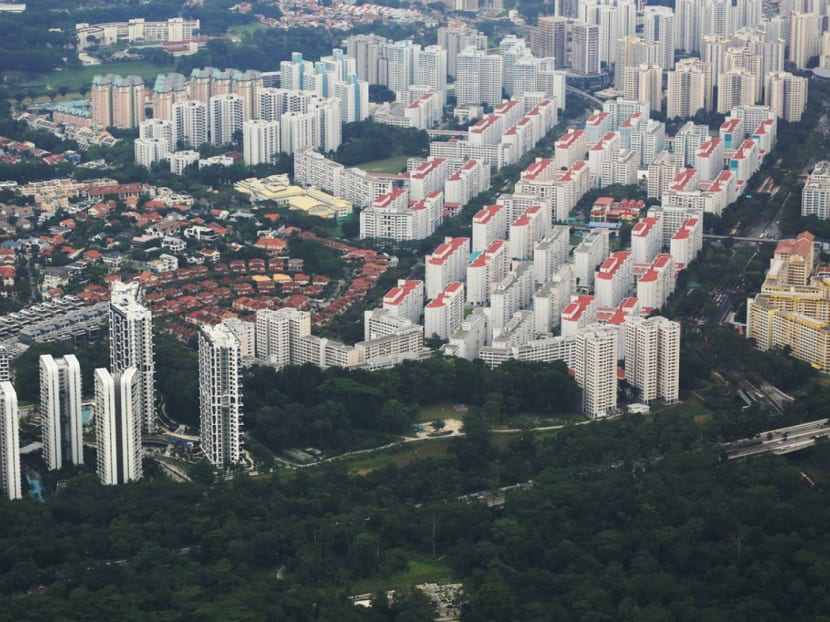New private homes to cost up to S$2,900 psf on average by 2030: DBS report
SINGAPORE — Projecting the population here to hit 6.3 million to 6.5 million by 2030, a research report released by DBS on Wednesday (May 16) forecasts new private homes to cost between S$2,300 and S$2,900 per square foot (psf) on average by then – sharply higher than the current S$1,500 psf.
SINGAPORE — Projecting the population here to hit 6.3 million to 6.5 million by 2030, a research report released by DBS on Wednesday (May 16) forecasts new private homes to cost between S$2,300 and S$2,900 per square foot (psf) on average by then – sharply higher than the current S$1,500 psf.
This means a compound annual growth rate of 1.5 per cent to 3.2 per cent over the next 12 years as growth in homeowners' incomes "keep pace" with the rise in private-property prices. The projection means an average unit of private property will cost from S$1.9 million to S$2.5 million by 2030.
The report, by property analysts Derek Tan and Rachel Tan, also projected the average size of new private units to shrink to 840 sq ft by 2030, 20 per cent smaller than the 1,083 sq ft average last year.
Other analysts, however, felt the price increases projected were too optimistic and that much depends on social and economic conditions in the run-up to 2030.
The DBS report expects annual volume of transactions for private homes to stay above the historical average for the next 12 years – reaching between 13,000 and 16,000 units until 2023, before tapering to an average of 12,000 to 13,500 units.
The demand could be even higher, said Mr Tan and Ms Tan, who did not take into account units that could be bought by foreigners. From 2001 to last year, the historical annual average stood at 12,000 units.
HDB upgraders will be a "key driver" for demand, and a "wildcard" would come from property-buying foreigners, who could boost the total number of transactions by up to 10 per cent, the DBS analysts said. New families will also contribute to demand for homes.
Based on their estimates, there is a significant supply of land available to build a further 1.3 million homes. "The Ministry of National Development (MND) has put in place a land-use plan which will cater for the longer-term growth in Singapore's population. According to the Master Plan 2030, an additional 3,000ha of land is available and is planned for residential use by 2030," they said.
The homes have a capacity to support another 3.8 million people, based on estimates, and this shows that government has the levers on both the population growth and supply front to ensure a stable property market.
However, risks such as slower population growth, immigration policies, and macro-economic uncertainties could potentially throw a spanner in the works, the DBS analysts noted.
Demand and property prices are "closely linked to economic prospects and any unexpected economic disruption resulting in higher unemployment rates or income growth could lead to fall/slower growth in prices," they said.
"In addition, the sector is also susceptible to policy risk which could have an impact on demand for property," they added. With a smaller population increase, the home demands projected will also be lesser.
If prices run up too quickly – by, say, more than 10 per cent in a year – it may prompt the government to consider tightening measures, they added.
Commenting on the report, Mr Alan Cheong, senior director, research and consultancy, at Savills said he expects the upturn of the property cycle to last until 2021. Beyond that, projections are impossible due to the presence of too many new factors, he said.
ZACD Group executive director Nicholas Mak felt the annual growth rate of private property prices should range between 1.2 and 2 per cent.
Property prices are expected to rise in the short term, but too many variables including the economy and external shocks make it unlikely for the market to be on a 12-year uptrend, he said.
There will also be a "limit" to the extent that new homes can shrink before they become unattractive to buyers. "If developers keep shrinking the unit size, buyers may look to other alternatives. Why would they move into something smaller, when that is like a downgrade in standards," Mr Mak said.
While demand is most likely to be domestic in the next few years, Mr Cheong agreed that foreigners may be a "wildcard". Foreign demand will vary with the market cycle, and is also influenced by government policies such as Additional Buyers' Stamp Duty, he said.
The availability of land under Masterplan 2030 is also "conceptual", said Mr Cheong. "Whether these potentials are met will depend on the economic and social conditions running up to 2030," he said.







